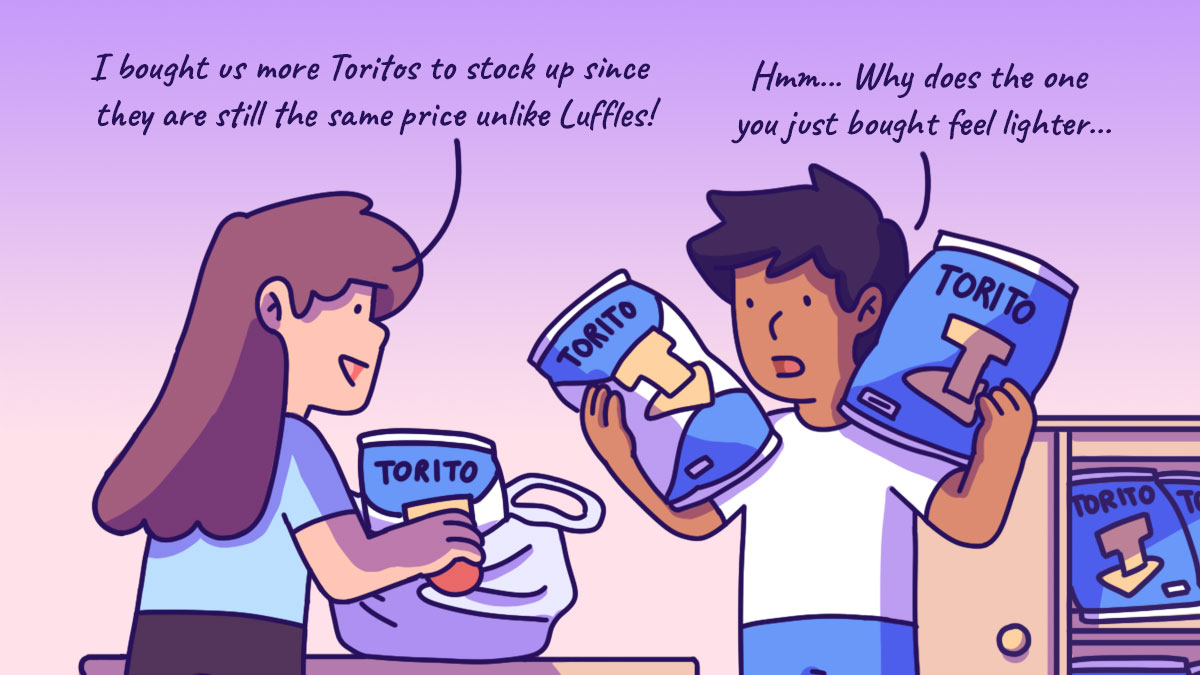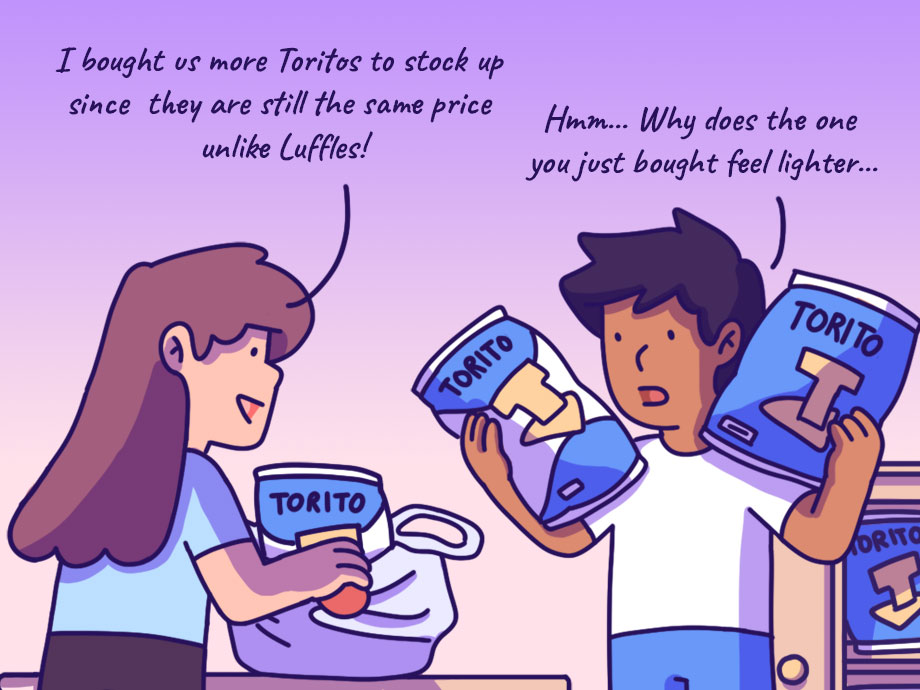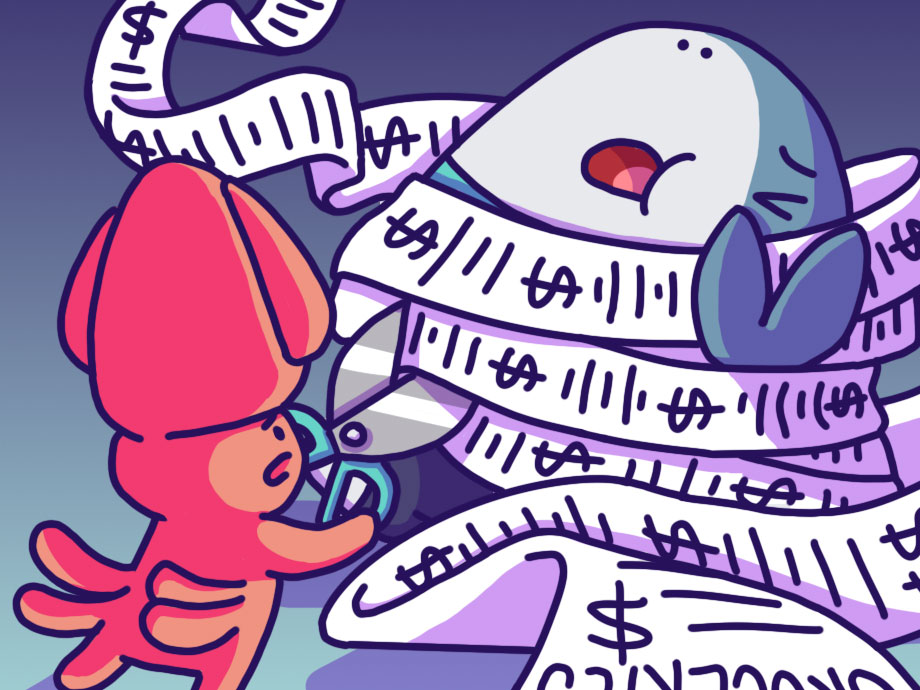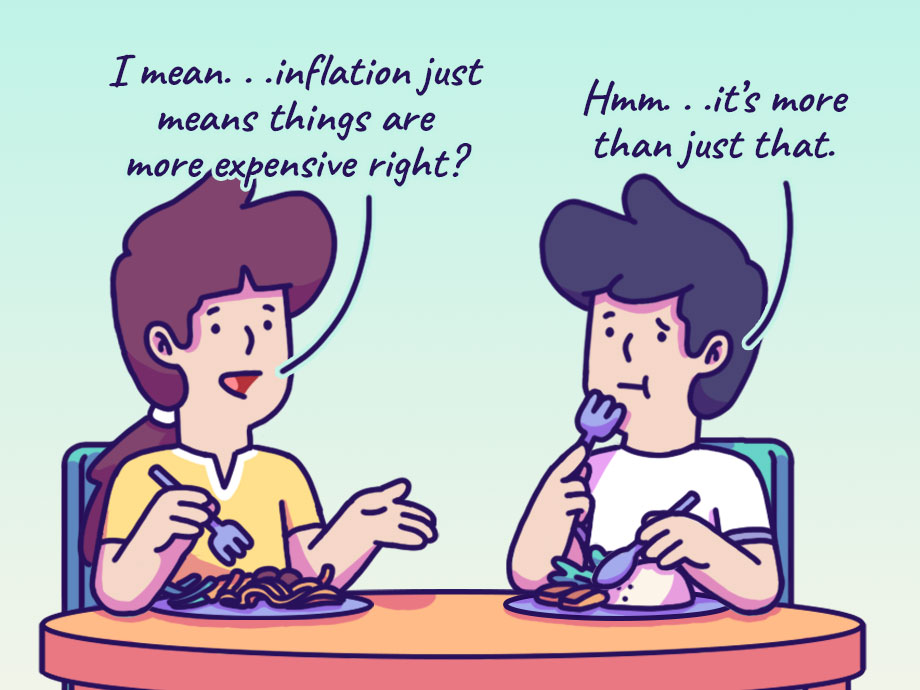Budgeting | Personal Finance | Article
It’s Not Your Fault, It’s Shrinkflation
by Cherry Wong | 6 Jun 2024 | 4 mins read
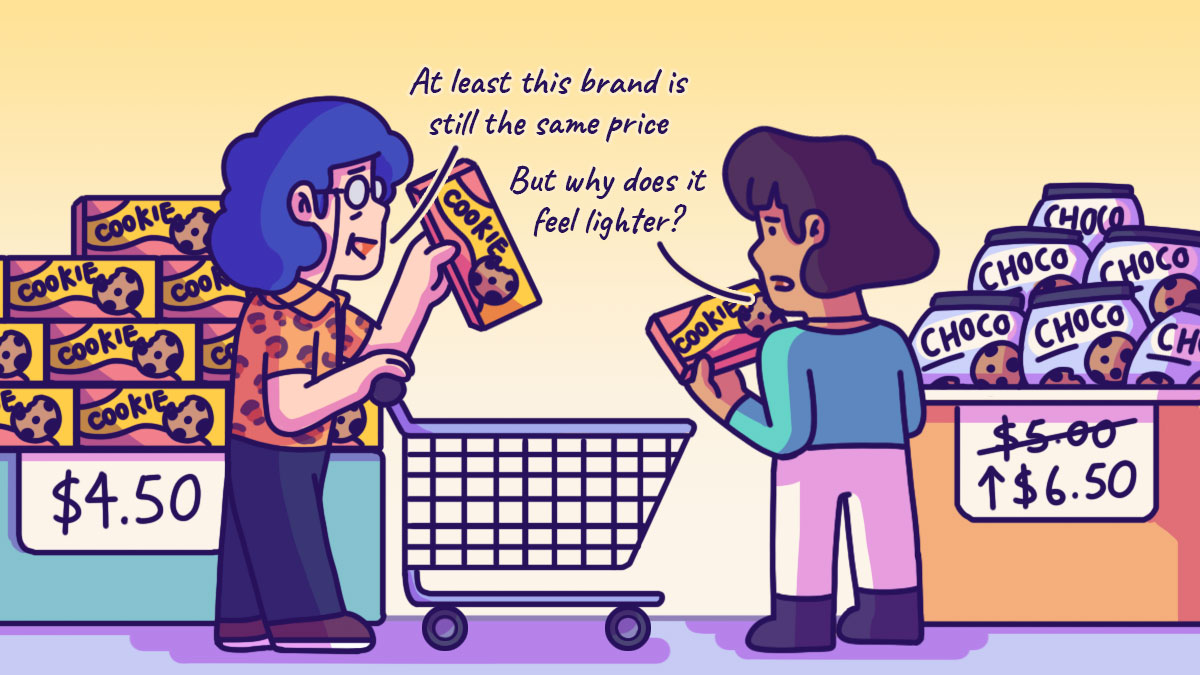
Have you noticed that some of the things you’re buying are getting smaller?
Yes, some things have shrunk in size. The candy bar is smaller, the liquid detergent bottle seems lighter and there appear to be fewer chips in the bag. It is not your imagination playing tricks on you, it is because of shrinkflation.
What Is Shrinkflation
Have you noticed that the price of some products has either gone up very slightly or remained the same? How is this possible when the cost of almost all of our groceries is more expensive?
It is because the product manufacturers have reduced the size of the packaging, and this is called shrinkflation. Shrinkflation happens when product sizes shrink without their prices decreasing.
Why does shrinkflation happen?
Shrinkflation is a fairly common marketing strategy used by manufacturers during times of high inflation when the cost of raw materials and production goes up.
To offset the increased cost, manufacturers would pass on the cost to consumers either by raising prices or they can choose to reduce the amount but sell it at the same price so that consumers can still afford to buy.
Downsizing is often used as a way to avoid raising prices and losing customers, especially during slow economic times.
Shrinkflation is the same as Inflation and this is how shrinkflation works
Inflation in prices makes things more expensive. For the same $100 in your wallet, you can buy fewer goods because the prices have gone up. Shrinkflation maintains the price but the quantity for the same $1 is reduced.
The difference between inflation and shrinkflation
| ABC biscuit | Before | After |
| Inflation | $10 = 1 box (100g) | $12 = 1 box (100g) |
| Shrinkflation | $10 = 1 box (100g) | $10 = 10 box (70g) |
Because consumers often focus only on the price tag, shrinkflation (also known as stealth inflation) can shrink your wallet without you noticing it. Unless you pay more attention to the information on the labels it is difficult to spot the size difference.
Related
How to spot shrinkflation, don’t just look at the price tag
There is only one way you can spot shrinkflation and that is you have to calculate the unit cost of the product and not just focus on the price tag. By comparing unit prices, you know exactly how much you’re getting for your money and how it is calculated.
The unit price calculation and comparison
| ABC biscuit | Before | Now | ||
| Product price | Unit price | Product price | Unit price | |
| Inflation | $10 = 1 box (100g) | $10/100 =
$0.10 per gram |
$12 = 1 box (100g) | $12/100 =
$0.12 per gram |
| Shrinkflation | $10 = 1 box (100g) | $10/100 =
$0.10 per gram |
$10 = 1 box (70g) | $10/70 =
$0.143 per gram |
Unit price of a product is how much they cost per unit (Unit price = Price/weight)
Because of inflation, for the same 100g box of biscuit you are paying $2 or 20% more.
Before: $10/100 = $0.10 per gram
After: $12/100 = $0.12 per gram
Unit Price Difference: ($0.12 – $0.10)/$0.10 = 20%
Because of shrinkflation, the packaging shrunk from 100g to 70g, but the price has remained the same and this may not be clear to most shoppers. But you are actually paying 43% more.
Before: $10/100 = $0.10 per gram
After: $10/70 = $0.143 per gram
Unit Price Difference: ($0.143 – $0.10)/$0.10 = 43%
How shrinkflation affects you and some ways to deal with them
When the prices of goods and services are rising, people always look for the ‘cheapest deal’ on the shelves to save money.
But buying the cheapest isn’t always the best value for money because of the ‘hidden’ price that can easily go unnoticeable. Shrinkflation has quietly crept into our shopping carts without us noticing how it is shrinking our wallets.
Always use the unit cost to compare prices before you buy them. It is the best way to compare past and present prices and also the prices of alternative brands.
For some items that you use regularly, a reduction in the quantity may mean that you need to buy more because it is not enough. This means that you will need to spend more and will need to adjust your budget for the added expenses.
Some fun facts of shrinkflation
| Year | Item | Reduction |
| 2010 | Kraft – Toblerone bar | 200g to 170g |
| Nestlé – After Eight Mint Chocolate Thins box | 200g to 170g | |
| 2011 | Cadbury Heroes | 975g to 695g |
| 2017 | Mcvitties – Jaffa Cakes | 12 pcs to 10 pcs |
| 2021 | Sainsbury – Spicy Thai Crackers |
|
| 2022 | Procter & Gamble – 18-count mega package number of double-ply sheets per roll |
|
| 2022 | Domino |





